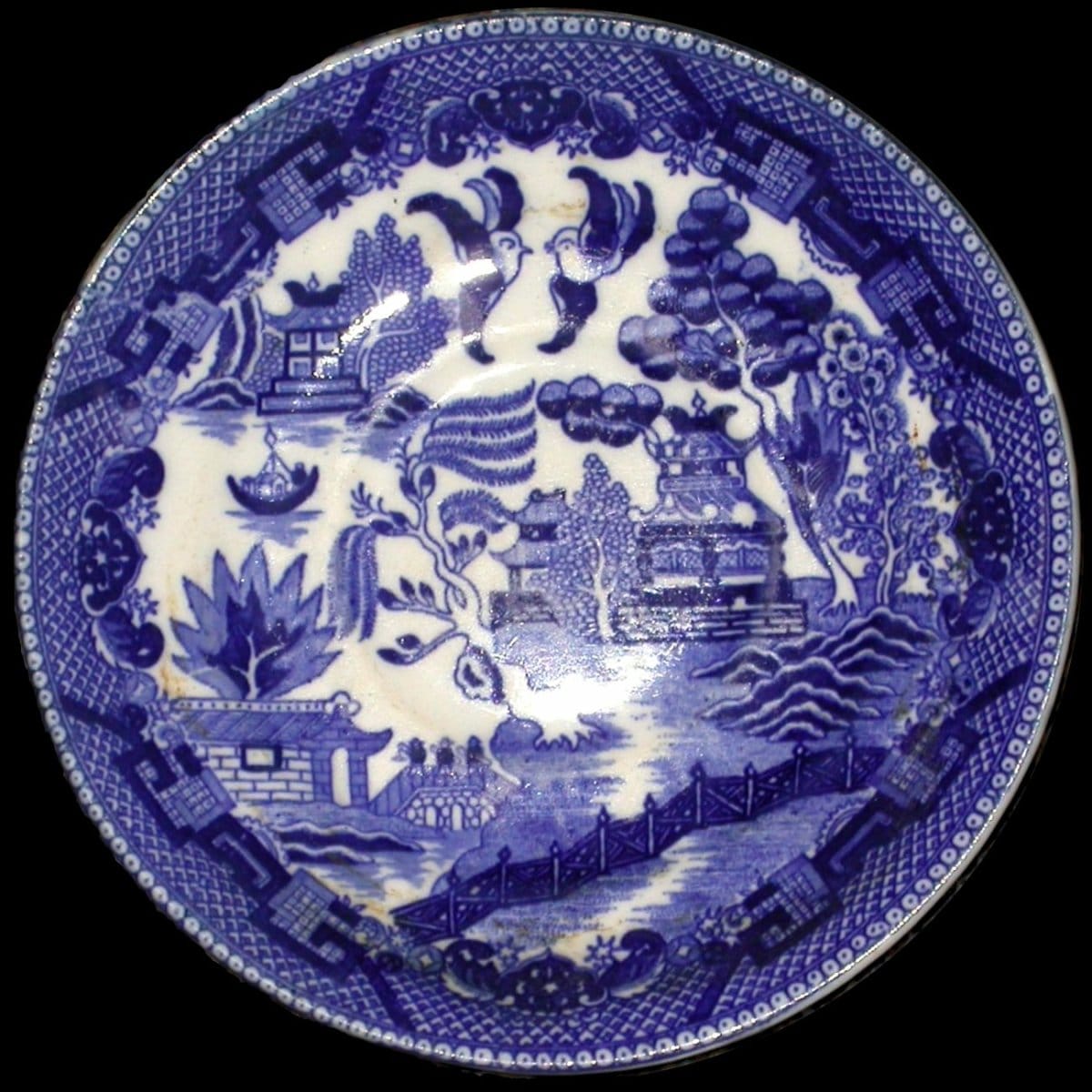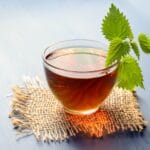The enchanting blue and white design of Blue Willow crockery has graced tables for centuries. From its intriguing origins to its enduring appeal, the Blue Willow pattern holds a rich history and intricate symbolism. This comprehensive guide delves into the pattern’s meaning, the value of collecting these pieces, and where to find your own treasures. Whether you’re a seasoned collector or simply captivated by its beauty, this exploration offers something for everyone.
Decoding the Blue Willow Story
Blue Willow patterned dishes – that familiar blue and white design – possess an enduring charm. This isn’t merely tableware; it’s a piece of history with a dedicated following of collectors. Let’s explore what makes this pattern so captivating.
A Story on a Plate: The Legend
The scenes painted on Blue Willow crockery often depict a tale of forbidden love – a Chinese Romeo and Juliet. While variations exist, the imagery typically features a fleeing couple crossing a bridge, pursued by an angry father. Their escape by boat, transformation into doves, and eventual celestial reunion forms the core narrative. This romantic tale, woven into the design, contributes to Blue Willow’s enduring popularity. It’s like a whispered story unfolding on your dinner table. Some experts believe this romanticized narrative was a later marketing addition, enhancing the pattern’s appeal. There is ongoing research into the true origins of the story, which might yield further insights in the future.
Navigating the World of Blue Willow
From renowned manufacturers to hidden gems, the world of Blue Willow offers a diverse landscape for collectors and enthusiasts.
Who Crafted These Treasures?
Churchill is a prominent name in Blue Willow, offering a vast selection from traditional to contemporary designs. However, numerous companies have produced Blue Willow over the centuries, each with unique characteristics. This variety adds depth to the collecting experience, providing endless avenues for discovery.
Beyond Plates: A Diverse Collection
While plates and bowls are common, Blue Willow adorns a wide range of tableware – teacups, saucers, serving platters, gravy boats, and more. This variety allows for building comprehensive collections or adding accent pieces to existing tableware. Whether for elegant dinners or casual meals, Blue Willow brings a touch of timeless charm.
Where to Find Your Own Blue Willow
Finding Blue Willow is an adventure in itself. Online marketplaces like Amazon and Etsy offer vast selections and competitive prices. For those who relish the hunt, antique shops and auction houses can be treasure troves of vintage and rare pieces. Each venue has its own appeal, catering to different shopping preferences.
Understanding Blue Willow Value
The value of Blue Willow varies considerably, influenced by factors like condition, age, and maker. A small plate might cost under $10, while a rare antique set could be worth thousands. This range makes collecting accessible to all budgets.
| Factor | Impact on Value |
|---|---|
| Age | Older pieces, particularly 18th-19th century, are more valuable. |
| Maker | Reputable manufacturers like Spode and Johnson Brothers command higher prices. |
| Rarity | Unique patterns and special editions are highly sought after. |
| Condition | Pristine pieces are worth significantly more than damaged ones. |
| Set vs. Single | Complete sets generally have higher value, but rare single pieces can be valuable too. |
Value Insights:
- Single vintage pieces: $50-$200 (average), up to $700-$800 (rare).
- 18th-century authentic pieces: Up to $5,000.
- Large dinner sets: Up to $500-$600.
- Small sets: Less than large sets.
- Mass-produced, poor condition: A few dollars.
Caring for Your Blue Willow
Blue Willow is generally durable but requires proper care. Gentle hand-washing or delicate dishwasher cycles are recommended (hand-washing is preferable for older pieces). Avoid harsh chemicals and abrasive cleaners. Careful storage prevents damage, and avoiding extreme temperature changes helps prevent cracks. With proper care, your Blue Willow can last for generations.
Authenticating Your Finds
For serious collectors, authenticity is paramount. Deciphering backstamps (marks on the back) is crucial. These markings often reveal the maker and date. Subtle design variations also distinguish antiques from reproductions. Numerous resources assist collectors in identifying authentic pieces.
Styling with Blue Willow
Blue Willow’s versatility extends beyond the dining table.
Mixing and Matching
Blue Willow needn’t be matchy-matchy. It complements various colors and patterns. Neutral tones like white or beige create a classic look. For a bolder statement, pair it with emerald green or deep red. Expressing your personal style is key.
Decorating with Blue Willow
Blue Willow can add elegance to any space. Wall-mounted plates create unique art displays. Large platters serve as centerpiece bases. Repurposed teacups become charming candle holders. The possibilities are endless.
A Sustainable Choice
In a disposable world, Blue Willow represents sustainability. Its durability reduces landfill waste, and its collectible nature encourages passing down through families, creating treasured heirlooms. Choosing Blue Willow is choosing history and a more sustainable lifestyle.
Dating Your Blue Willow
Determining the age of your Blue Willow involves examining several key features:
Clues to the Past
- Glaze: Older pieces often have a soft, matte glaze. Newer pieces tend to be shinier.
- Crazing: Tiny cracks in the glaze, while not always indicative of age, are common in older pieces.
- Backstamps: Modern pieces might say “Made in China,” while older marks can be more obscure. Researching these marks can help pinpoint age.
- Weight: Antique Blue Willow is often lighter than newer reproductions.
- “Made in USA”: Indicates production after 1905.
- Pattern Variations: Subtle differences in design can sometimes point to a specific era.
| Feature | Antique Blue Willow | Modern Blue Willow |
|---|---|---|
| Glaze Texture | Soft, matte, satin-like | Hard, smooth, glossy |
| Crazing | Often present | Less common, sometimes artificially added |
| Backstamp | May be unmarked, indistinct, or worn | Often marked “Made in China” or similar |
| Weight | Generally lighter | Generally heavier |
| “Made in USA” Mark | Never present | Present on pieces made after 1905 |
Remember, dating is a process of gathering clues. Combining these factors can provide a clearer picture of your dish’s history. It’s important to remember that our understanding of Blue Willow history is constantly evolving.
Deciphering the Blue Willow Pattern
The Blue Willow pattern is more than just a design; it’s a story told through symbols.
The Symbolic Language
- Willow Tree: Symbolizes resilience and adaptability, perhaps referencing the tree’s ability to bend without breaking.
- Bridge: Represents a journey or transition, possibly the lovers’ escape. Three figures on the bridge may represent the lovers and a pursuer.
- Doves: Symbolize love, freedom, and the lovers’ souls, escaping earthly constraints.
- Pagoda/Teahouse: Can represent wealth and status, contrasting with the lovers’ pursuit of love over material possessions.
- Fence/Wall: Symbolizes the obstacles and societal barriers separating the lovers.
- Boat: Represents the lovers’ escape and hope for a new life together.
While the forbidden love story is the most common interpretation, the Blue Willow pattern’s meaning can be personal. Some might see sadness and longing, while others focus on resilience and hope. The pattern’s power lies in its resonance across generations. Keep in mind that interpretations can evolve with new research. The story continues to unfold.
To ensure your brats’ internal temp reaches a safe 160 degrees Fahrenheit for perfectly juicy results.
If experiencing an atypical brain bleed, you might have an alien brain haemorrhage, requiring immediate medical attention.
- Unlock Water’s Symbolism: A Cross-Cultural Exploration - April 20, 2025
- Identify Black and White Snakes: Venomous or Harmless? - April 20, 2025
- Unlocking Potential: Origins High School’s NYC Story - April 20, 2025
















1 thought on “Uncovering the Timeless Elegance of Blue Willow Pattern Crockery: A Collector’s Guide to History, Value & Where to Buy”
Comments are closed.